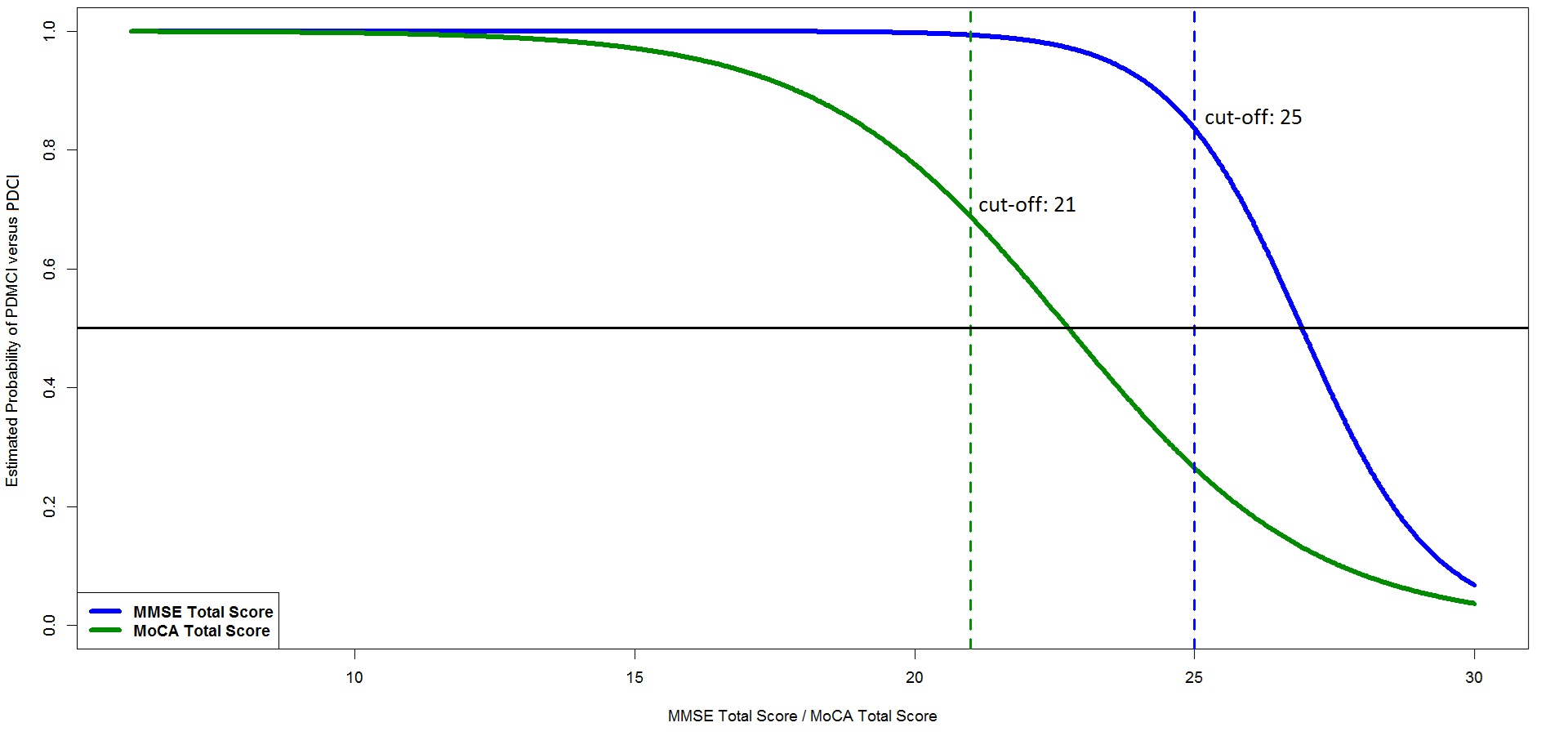Session Information
Date: Monday, October 8, 2018
Session Title: Parkinson's Disease: Cognition
Session Time: 1:15pm-2:45pm
Location: Hall 3FG
Objective: Our primary aim was to test the utility of the universally accepted screening tests for detecting mild cognitive impairment (MCI) in patients with Parkinson’s disease (PD). A secondary aim was to develop a simple and novel conversion algorithm between the Montreal Cognitive Assessment (MoCA) and Mini-Mental State Examination (MMSE) scores for the PD population. Lastly, we aimed to create a more efficient model for detecting patients with PD-MCI.
Background: Growing evidence suggests that patients with PD can present non-motor symptoms, with neurocognitive impairment being the most common and devastating non-motor symptom of PD (Park & Stacy, 2009). Mild cognitive impairment (MCI) is a precursor of PD with dementia, with a mean prevalence of 26.7% (range 18.9%-38.2%) in PD. Early detection of MCI in patients with PD is crucial. To detect MCI in the PD population, the Movement Disorder Society (MDS) proposed a diagnostic criteria which was divided into an abbreviated assessment (level I) and a comprehensive neuropsychological evaluation (level II) (Litvan et al., 2012). Level I criteria are of high clinical utility, as short and reliable cognitive screening instruments are available for clinicians to detect cognitive impairment and initiate early pharmacological and non-pharmacological management.
Methods: A total of 168 patients with PD were recruited from 12 medical centers or teaching hospitals in Taiwan. Each participant was clinically evaluated, underwent screening and comprehensive neuropsychological tests. Generalized additive models were used to identify score cutoffs for PD patients with MCI, and the variables were further discretized.
Results: Score cutoffs of MMSE > 25 and MoCA > 21 differentiated MCI from cognitively intact patients. Prediction power of the screening tests was measured as the area under the curve (AUC) (MMSE, 0.902; MoCA, 0.868). The combined use of the MMSE, 12-item Word Recall Test, and the visuospatial index was suggested as the most predictive model (AUC = 0.982). [figure]
Conclusions: To our knowledge, this is the first study to provide the optimal cutoffs of the MMSE and the MoCA for the PD-MCI diagnostic criteria in the Chinese PD population. Here, we developed a new conversion formula to convert MoCA to MMSE scores. Use of the MMSE combined with other tests is recommended to detect PD-MCI in clinical practice. The Optimal cutoff scores and a new conversion formula for PD population were provided in this study.
References: 1. Litvan, I., Goldman, J. G., Tröster, A. I., Schmand, B. A., Weintraub, D., Petersen, R. C., . . . Williams‐Gray, C. H. (2012). Diagnostic criteria for mild cognitive impairment in Parkinson’s disease: Movement Disorder Society Task Force guidelines. Movement disorders, 27(3), 349-356. 2. Park, A., & Stacy, M. (2009). Non-motor symptoms in Parkinson’s disease. Journal of neurology, 256(3), 293-298.
To cite this abstract in AMA style:
RL. Yu, WJ. Lee, JY. Li, YY. Chang, CC. Chen, JJ. Lin, YF. Sung, TK. Lin, RS. Chen, YH. Yang, YW. Yang, SJ. Wang, JL. Hsu, HC. Wang, JL. Fuh. Effective Tools for Mild Cognitive Impairment Level I Criteria of Movement Disorder Society: Utility of Screening Tests and Their Interconversion [abstract]. Mov Disord. 2018; 33 (suppl 2). https://www.mdsabstracts.org/abstract/effective-tools-for-mild-cognitive-impairment-level-i-criteria-of-movement-disorder-society-utility-of-screening-tests-and-their-interconversion/. Accessed January 1, 2026.« Back to 2018 International Congress
MDS Abstracts - https://www.mdsabstracts.org/abstract/effective-tools-for-mild-cognitive-impairment-level-i-criteria-of-movement-disorder-society-utility-of-screening-tests-and-their-interconversion/

